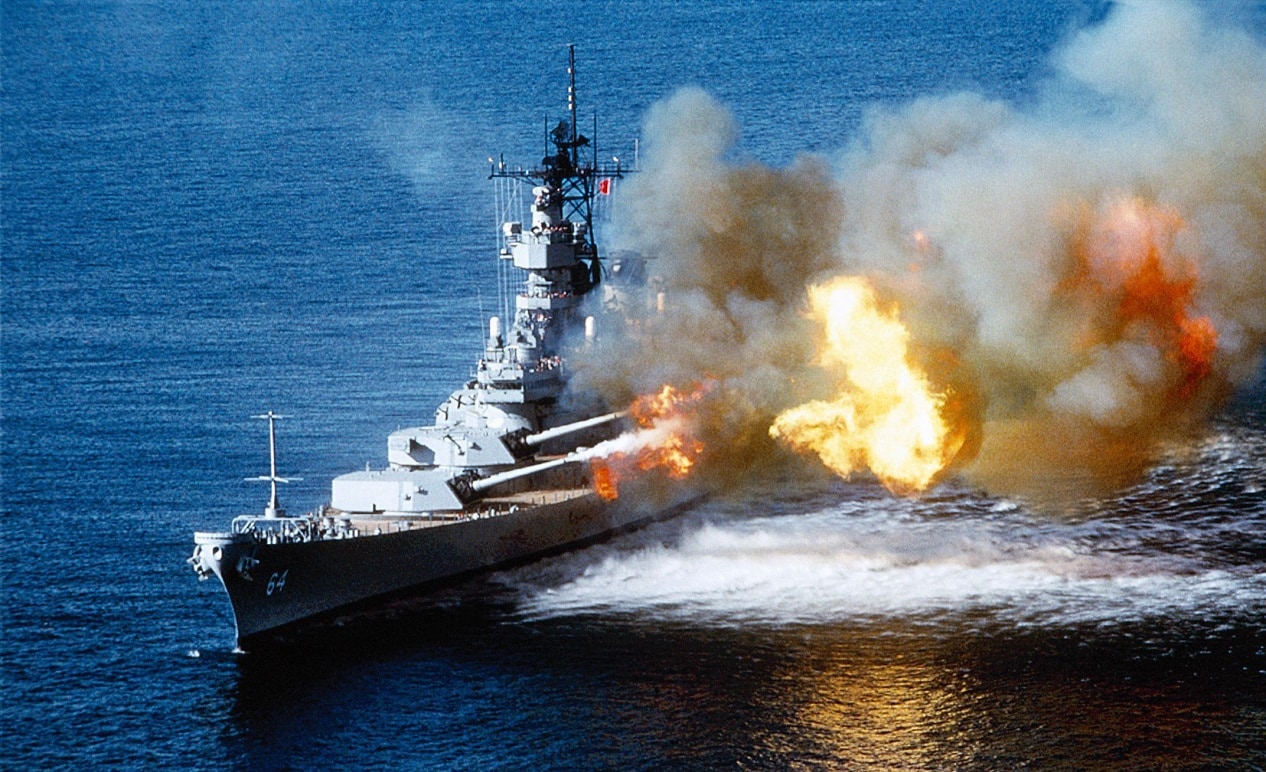The Iowa-class was the Largest and Fastest American Battleships Ever Completed: Anyone who has ever built a model battleship likely has been taken aback by all the little details. Now just imagine what went into actually designing such a weapon of war, notably the U.S. Navy’s six planned Iowa-class battleships – the final such capital ships to enter service. In total, it took 3,432,000 man-hours – more than 206 years of draftsman hours – to complete the final design. The total completed plans reportedly weighed 175 tons, 30 inches in width, and are 1,100 miles long when laid out.
Work on what was to become the 45,000-ton Iowa-class “fast battleship” began in early 1938 under the direction of Adm. Thomas C. Hart, head of the General Board, which followed the Battleship Design Advisory Board’s recommendation. At 860 feet long, the length of almost three football fields, the Iowa-class was 200 feet longer than the previous South Dakota-class. That allowed for additional space to be devoted to the ship’s engine, enabling the new class to be truly fast, reaching a top speed of 32.5 knots and protect the U.S. fast carriers.
The Iowa-class carried the same number and caliber of main guns as the preceding class – nine 16-inch guns in three triple turrets, including two forward and one aft – while the length of the guns was increased from 45 to 50 calibers. The new class also carried the same secondary battery of twenty 5-inch/38mm guns in ten twin turrets. The battleships were equally well protected, with a belt of internal hull armor plates – consisting of nickel-steel – of 12.1 inches (307.3mm) tapered to 1.62 inches (41.1mm) on a 19-degree incline, while the face-plate of the turrets had 17 inches (431.8mm) of armor!
U.S. Steel, Bethlehem Steel, and Lukens Steel all manufactured the armor used on the Iowa-class battleships, and it was strong enough that it could have likely withstood a direct hit from an 18-inch armor-piercing shell from 18,000 yards (about 10 miles).
The U.S. Navy called for six planned Iowa-class battleships, which were authorized in three batches of two.
The first two ships, USS Iowa (BB-61) and USS New Jersey (BB-62) were authorized in Fiscal Year 1939 (FY3), and the contract was signed on July 1 1939. They were laid down in June 27 and September 16, 1940, respectively. The next pair, USS Missouri (BB-63) and USS Wisconsin (BB-64), was part of the FY41 budget – and they were ordered on June 12, 1940 and were laid down on January 6, 1941, and January 25, 1941, respectively. Two additional ships were ordered – USS Illinois and USS Kentucky – but canceled before completion.
It took approximately two years, eight months to build each of the four completed Iowa-class battleships. And while some 2,800 men would serve on each of the warships during in World War II, tens of thousands of men and women worked in shifts around the clocks at each of the U.S. naval yards that produced the battlewagons. More than 71,000 people were employed at the Brooklyn Navy Yard, the largest center in the navy and the largest employer in the State of New York during the war.
As capital warships, they were a capital investment, costing a reported $100 million each in 1940 dollars – or around nearly $2 billion per ship today. However, to put that in perspective, the U.S. Navy’s USS Gerald R. Ford aircraft carrier has been estimated to be $13.3 billion – but it is running 30 percent overestimates. Still, for its costs, the Navy could have built all six Iowa-class battleships with money to spare.
Peter Suciu is a Michigan-based writer who has contributed to more than four dozen magazines, newspapers and websites. He regularly writes about military small arms, and is the author of several books on military headgear including A Gallery of Military Headdress, which is available on Amazon.com.

